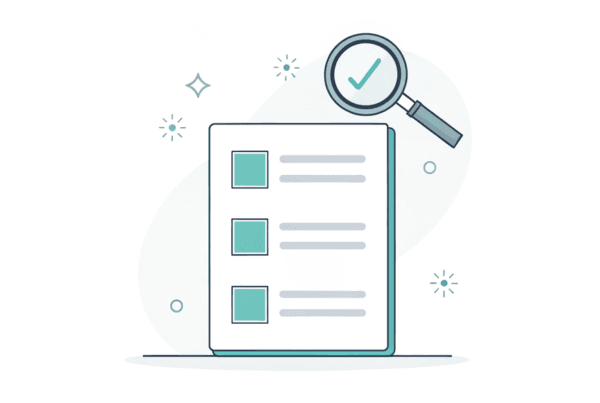As the owner of a successful Occupational & Hand Therapy practice in Salt Lake City, the thought of selling is likely about more than just a transaction. It’s about your future, your staff’s security, and the legacy you’ve built. The current market presents a significant opportunity, but unlocking your practice’s full value requires strategy. This guide offers insight into the Salt Lake City market and the key steps to a successful sale.
Curious about what your practice might be worth in today’s market?
Market Overview
The market for therapy practices is exceptionally strong. Nationally, the industry is projected to grow at a rate of 10.1% annually through 2032. This national trend is reflected in our local market, creating a favorable environment for practice owners considering a sale.
A Growing National Appetite
Investors and larger healthcare groups are actively seeking to acquire well-run therapy practices. They see the value in the services you provide and the increasing demand for them. This high level of interest means that prepared sellers are in a strong negotiating position.
The Salt Lake City Landscape
Here in Salt Lake City, the healthcare ecosystem is robust and growing. With a healthy workforce of therapy professionals, the city is an attractive location for buyers looking to expand their footprint. A key factor for any practice here is its payor mix. Revenue from Medicare and Medicaid now accounts for over 58% of the industry total, making a stable, well-managed relationship with these payors a significant asset in the eyes of a potential buyer.
Key Considerations
A sophisticated buyer will look deeper than your top-line revenue. They are buying future cash flow, so they will analyze the sources of that cash and its stability. The story of your practice is told through its operations. Is your practice dependent on you as the sole provider, or have you built an associate-driven model that can run independently? An associate-driven practice often commands a higher value because it represents lower risk to the buyer. Similarly, your mix of insurance and cash-pay patients has a major impact on how your practice is valued. Understanding these details is the first step in positioning your practice for a premium sale price.
Market Activity
The current M&A market is dynamic. To make the most of it, it’s helpful to understand what is driving deals today.
- Increased Buyer Interest. We see a mix of buyers in the market, from private equity groups looking for a platform to build upon to larger strategic healthcare organizations seeking to expand their service lines in the Mountain West. This creates a competitive environment for well-positioned practices.
- A Focus on Proven Performance. Many owners think about selling 2-3 years in the future. That is the perfect time to start preparing. Buyers pay for what is proven, not for potential. The work you do now to streamline operations and clean up financials will directly translate to a higher valuation when you are ready to sell.
- The Window of Opportunity. Strong market conditions don’t last forever. The current combination of high demand and available capital creates a seller’s market. Timing your exit correctly can have a massive impact on your final proceeds.
The Sale Process
Selling your practice follows a clear path, but it contains points where a deal can easily falter without proper guidance. The process begins with a comprehensive valuation to set a realistic and defensible price. Next, your practice is confidentially marketed to a curated list of qualified buyers. Once interest is established, the critical due diligence phase begins. This is an intense review of your financials, operations, and legal standing. It is the stage where many deals encounter unexpected problems. With proper preparation, you can anticipate buyer questions and ensure a smooth process, leading to a successful closing.
Valuation
How is your practice’s value actually determined? It’s not based on a simple revenue multiple. Sophisticated buyers value your practice based on Adjusted EBITDA (Earnings Before Interest, Taxes, Depreciation, and Amortization). We calculate this by taking your net income and adding back owner-specific expenses and non-recurring costs to find the true cash flow of the business. This Adjusted EBITDA figure is then multiplied by a specific number, a multiple, to determine the enterprise value.
That multiple isn’t random. It changes based on several key factors.
| Factor | Impact on Valuation Multiple |
|---|---|
| Scale & Profitability | Higher EBITDA generally earns a higher multiple. |
| Provider Model | Multi-provider, associate-led practices are valued higher. |
| Payer Mix | Stable, in-network contracts reduce perceived risk. |
| Growth Trajectory | A history of consistent growth is highly attractive. |
Most owners are surprised to learn their practice is worth more than they thought once EBITDA is properly normalized. Getting an accurate, professional valuation is the foundation of any successful sale strategy.
Post-Sale Considerations
The structure of your deal is just as important as the final price. You need a plan for what happens after the papers are signed. Do you want to continue working for a period of time? Are you looking for a clean break? Some deals involve an “earnout,” where you can receive additional payments if the practice hits certain performance targets post-sale. Others might involve “rollover equity,” where you retain a minority stake in the new, larger company. This allows you a potential second financial reward when that larger entity is eventually sold. A well-structured deal protects your legacy, ensures a smooth transition for your staff, and aligns the sale with your personal and financial goals for the future.
Frequently Asked Questions
What is the current market outlook for selling an Occupational & Hand Therapy practice in Salt Lake City, UT?
The market for therapy practices is exceptionally strong, with national industry growth projected at 10.1% annually through 2032. Salt Lake City’s healthcare ecosystem is robust and growing, making it an attractive location for buyers. This creates a favorable environment for practice owners considering a sale.
How is the value of my Occupational & Hand Therapy practice determined?
Valuation is based on Adjusted EBITDA (Earnings Before Interest, Taxes, Depreciation, and Amortization). This is calculated by adjusting net income for owner-specific expenses and non-recurring costs to find true cash flow. The Adjusted EBITDA is then multiplied by a multiple that depends on scale, profitability, provider model, payer mix, and growth trajectory.
What factors can increase the sale price of my practice?
Key factors that can increase valuation include higher EBITDA, a multi-provider or associate-driven practice model, a stable payer mix with in-network contracts, and a consistent history of growth. These elements reduce risk and are highly attractive to buyers.
What should I expect during the sale process of my Occupational & Hand Therapy practice?
The sale process includes a comprehensive valuation, confidential marketing to qualified buyers, and a due diligence phase where financials, operations, and legal status are intensely reviewed. Proper preparation is essential to anticipate buyer questions and ensure a smooth transaction leading to a successful closing.
What post-sale options should I consider for my practice?
Post-sale considerations may include continuing to work for a period, seeking a clean break, or structuring the deal with an earnout for additional payments if performance targets are met. You might also consider rollover equity to retain a minority stake in the new company, aligning with your personal and financial goals while protecting your legacy and ensuring a smooth staff transition.



